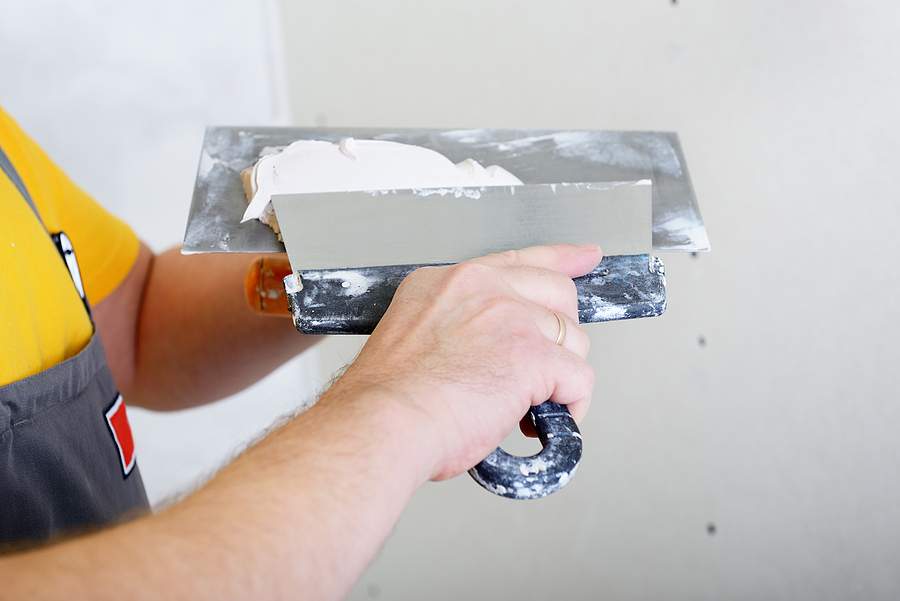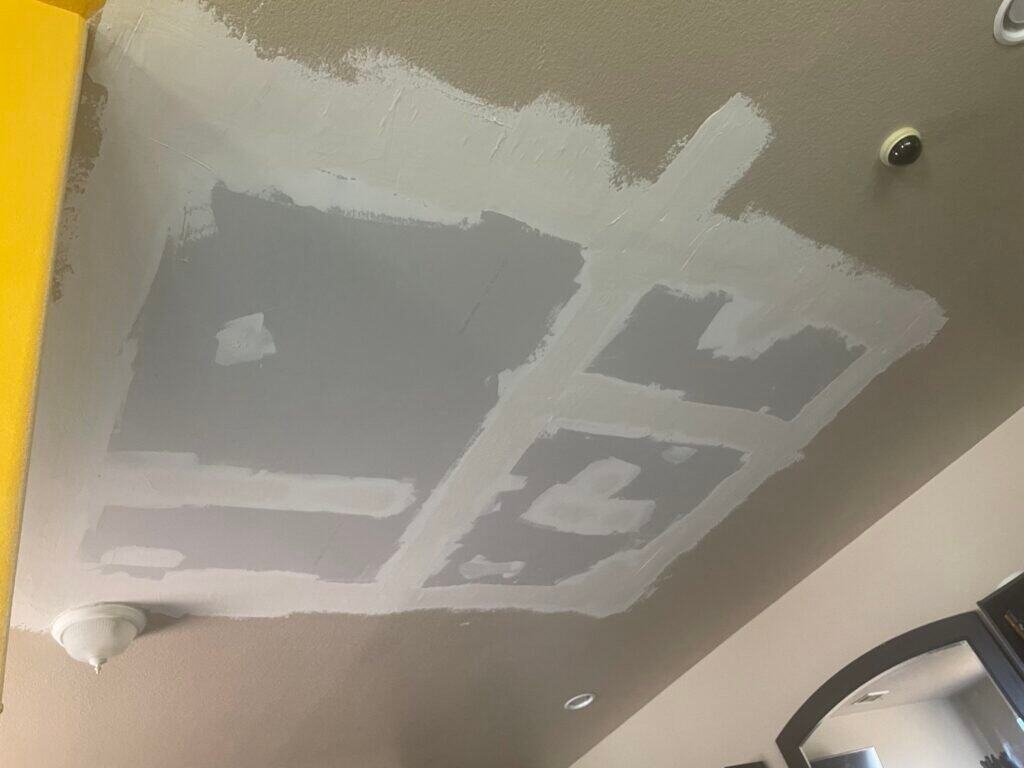Learn reliable techniques from local drywall contractors to enhance your Interior Painting projects.
A Comprehensive Overview to Learning Drywall Repair Work and Installation
This guide provides an extensive exploration of drywall fixing and setup, catering to both newbies and experienced professionals. It details important devices, methods for patching and hanging sheets, and the critical ending up procedures. Interior Painting. By understanding typical mistakes, individuals can achieve polished results. Mastering these abilities not just enhances one's home however likewise develops self-confidence in do it yourself undertakings. What fundamental pointers will assure an effective project from beginning to end?
Essential Tools for Drywall Repair Work and Setup
When starting on drywall repair and installment, a couple of important devices can greatly boost the efficiency and quality of the job. A drywall blade, generally offered in different dimensions, is essential for applying joint compound and smoothing seams. A taping knife is additionally necessary for feathering edges and making sure a smooth finish. Furthermore, a drywall saw or energy blade permits specific cutting of drywall sheets to fit any kind of space.

Step-by-Step Overview to Patching Holes
Patching openings in drywall is an uncomplicated procedure that can restore the wall surface's appearance and stability. To start, the area around the hole need to be cleaned up and any kind of loosened debris removed. For little holes, a straightforward spackle or joint compound can be applied with a putty blade. Larger holes might need a patch; a piece of drywall can be cut to fit the opening, safeguarded with glue or screws, and after that taped around the sides. As soon as the spot remains in place, joint substance is used over the patch and feathered out to mix with the bordering wall. After the substance dries, sanding is required to achieve a smooth coating. Finally, the repaired area can be primed and painted to match the remainder of the wall surface. This technique assures a seamless repair, enhancing the total look of the drywall and keeping its structural integrity.
Strategies for Hanging Drywall Sheets
After successfully fixing openings in drywall, the following action involves hanging brand-new drywall sheets to produce a smooth surface area. To attain this, one have to begin by gauging the wall surface area accurately and cutting the drywall sheets to fit. It is vital to hang the sheets horizontally for far better structural integrity, beginning from the top and working downwards.
Making use of a drywall lift can simplify the procedure, especially for ceiling setups. As soon as placed, safeguarding the sheets with drywall screws at periods of you can find out more about 12 inches along the edges visit site and 16 inches in the field is vital. This ensures a firm hold and reduces the risk of sagging. For corners, the sheets should be reduced to fit snugly, permitting cleaner seams. Ultimately, it is suggested to stagger the joints in between sheets to strengthen the total framework, developing a much more durable coating ready for the following stage in the drywall installment procedure.
Ending Up Touches: Taping and Mudding
Completing the drywall installation entails the important steps of mudding and taping, which guarantee a sleek and smooth surface. Taping needs the application of joint tape over the joints between drywall sheets. drywall contractor. This tape can be either paper or fiberglass fit together, with each kind offering unique advantages. After taping, the next action is mudding, where joint substance, or "mud," is used to cover the tape and load any type of imperfections
Making use of a drywall knife, the substance must be spread uniformly, making sure a feathery side to minimize noticeable changes. Numerous layers are typically required, with fining sand in between each layer to achieve a smooth surface area. Mindful focus during this procedure is vital, as it significantly affects the final appearance of the wall. With the right method and patience, the end outcome will certainly be a flawless foundation ready for paint or ending up touches.
Typical Mistakes to Prevent in Drywall Projects

Another typical error is not enabling adequate drying time between coats, which can catch moisture and jeopardize the coating. Furthermore, ignoring to feather the sides appropriately can create visible lines and flaws. Ultimately, skipping sanding or utilizing inappropriate techniques might leave rough areas. By knowing these mistakes, individuals can considerably improve the top quality of their drywall jobs and achieve a professional-looking coating.
Often Asked Inquiries
Can I Fix Drywall Without Expert Help?
Yes, one can fix drywall without expert assistance. With the right tools, materials, and guidance, individuals can efficiently take care of small repair work. Considerable damages may call for professional know-how for suitable results and resilience.
The Length Of Time Does Drywall Substance Take to Dry?
Drywall substance usually takes between 24 to 48 hours to dry entirely, depending on elements such as humidity and temperature level. Thinner layers might dry out much faster, while thicker applications require more time for ideal outcomes.
What's the very best Kind of Paint for Drywall?
The best kind of paint for drywall is usually a water-based latex paint. It gives outstanding protection, durability, and convenience of application, making it perfect for indoor wall surfaces while allowing for very easy cleanup with soap and water.

How Do I Avoid Mold on Drywall?
To stop mold and mildew on drywall, assurance proper air flow, control humidity degrees, make use of mold-resistant products, and without delay deal with any leaks. Routine evaluations and immediate remediation of water damages are additionally crucial for long-lasting prevention.
Is Drywall Recyclable After Removal?
Drywall is recyclable after elimination, gave it is devoid of impurities like mold and mildew, paint, or various other hazardous materials. Recycling facilities can process it into brand-new items, advertising sustainability and minimizing landfill waste in building and construction.
When starting on drywall repair and setup, a couple of vital tools can greatly boost the performance and quality of the job. After effectively repairing openings in drywall, the next step entails hanging new drywall sheets to create a seamless surface. Completing the drywall installation entails the important actions of taping and mudding, which assure a smooth and polished finish. Attaining a sleek coating in drywall jobs can be challenging, and several usual mistakes can undermine the top quality of the work. Yes, one can fix drywall without expert help.